Chuck D Talks Art, Music & More on the East End
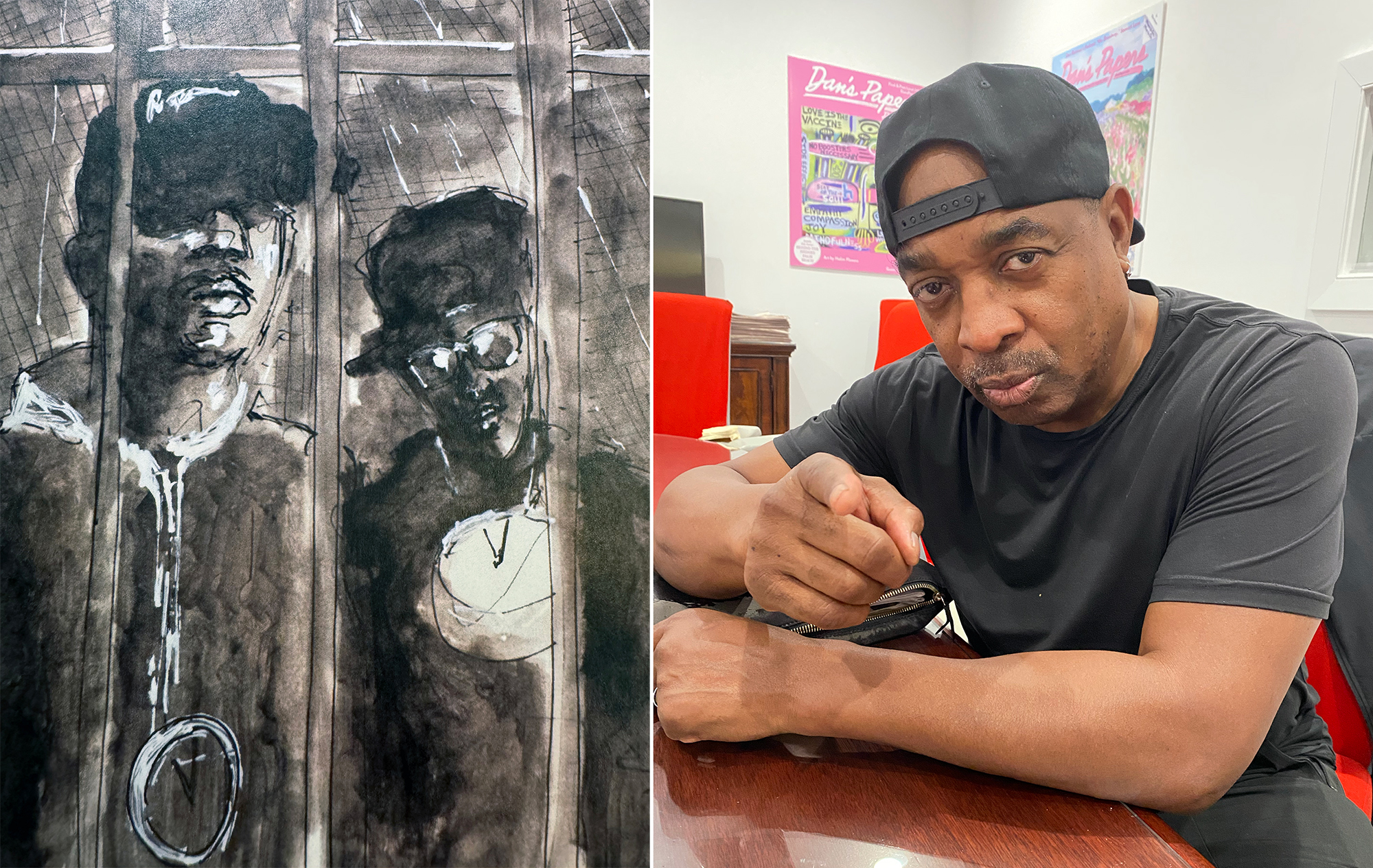
The East End is home to some true music legends, but few are as iconic and important as Public Enemy cofounder Chuck D. The rapper built a career on making songs with a message, and he changed the course of hip hop, and music, in the process. But what many don’t know, is that Chuck D, aka Carlton Douglas Ridenhour, is also a brilliant and prolific artist who began drawing and painting long before he tried his hand at music.
Using a variety of media, he’s illustrated his adventures touring around the globe, along with what’s happening on the broader world stage — from the pandemic to politics, people and places — all in a frenetic, energetic style that makes everything feel vibrant and alive.
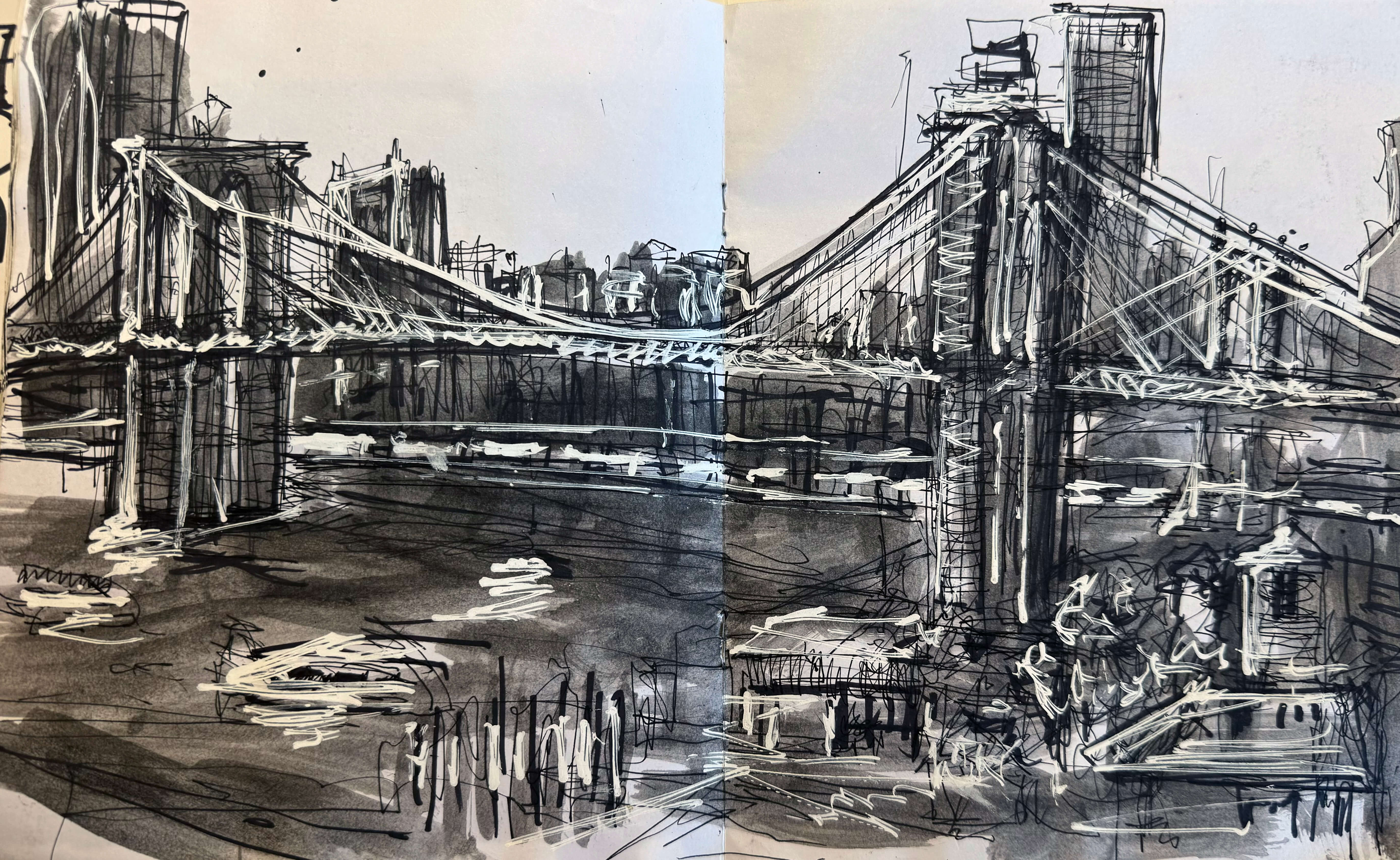
The work, which usually takes shape in Chuck D’s sketchbooks, is chronicled in several books by the artist, including his three-volume STEWdio: The Naphic Grovel ARTrilogy (2023), and his other “Naphic Grovel” Summer of HAMN: Hollowpointlessness Aiding Mass Nihilism (2023), both published by Enemy Books, his imprint under Akashic Books. He published Livin’ Loud: Artitation by Chuck D & the Near Def Experience in 2022 with Genesis Publications, and, most recently, RAPilates: Body and Mind Conditioning in the Digital Age, an actual Pilates how-to book he illustrated in partnership with Pilates guru Kathy Lopez, published in 2024 through Enemy Books after he found the exercises kept him on point while performing live.
“Zero to 25, I was all art, all the time,” Chuck D, now 64, says during a visit to the Dan’s Papers office. He was born in Queens and raised in Roosevelt, earned awards for his art in high school before he attended Adelphi University for graphic design, graduating in 1984. But, by then, music had already started being a big part of his life. “I did music, starting in 1979 as a 19-year-old … I got involved in the pioneering efforts at Adelphi through radio, combining my art acumen into the music, from making flyers to graphic design,” he says, adding, “I was influenced by the rock bands on Long Island, like in the Island Ear magazine, and every rock band had a logo.”
At the time, Chuck D’s DJ group, Spectrum — the precursor to Public Enemy from 1979 to 1986 — pioneered the use of logos and marketing. “We were the first to take it seriously,” he says.
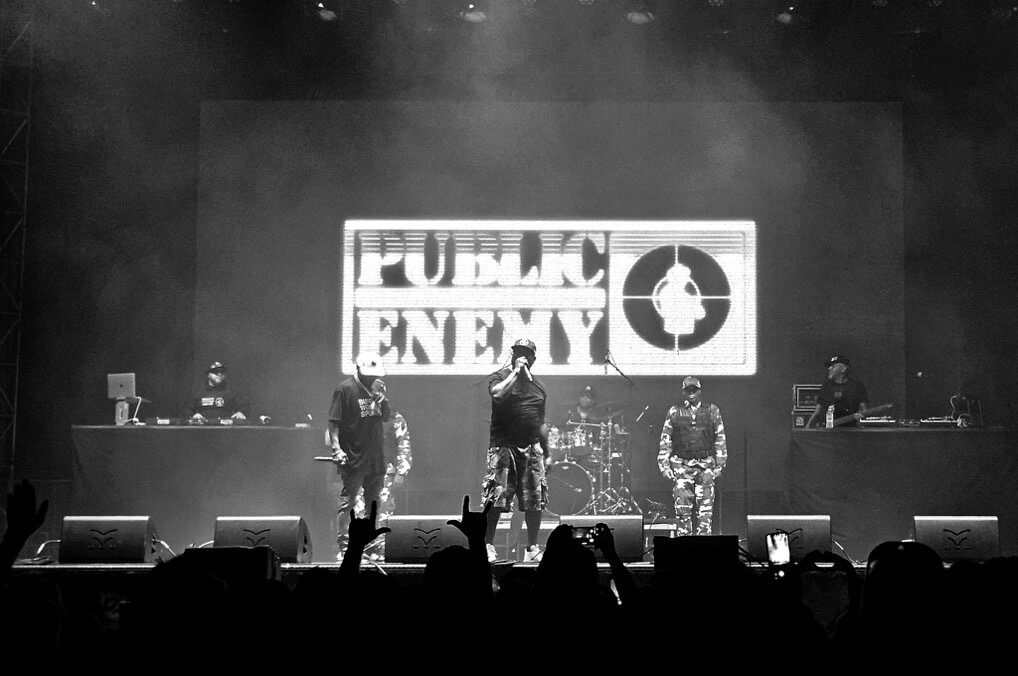
“I got further and further into the music, and I became more like an art director,” Chuck D continues, pointing out that before computers changed the way design was done, they made fliers and promotional materials with tools like markers and X-Acto knives. In fact, he says, “I made the Public Enemy logo pretty much with Wite-Out in a Xerox. “Sharpie, Wite-Out and cut and paste, boom, boom, boom. And that’s how that happened,” he recalls, explaining how he took a logo he made for another group that never went anywhere and turned it into Public Enemy’s indelible emblem featuring a Black man in the violent crosshairs of the police and government. “I snatched it from something I created — I stole it from myself.”
Looking at the rock album covers and art at the time, Chuck D says he was inspired to give hip hop records their own visual identity. “That’s one thing I wanted to bring to hip hop, that there could be an art aesthetic,” he explains, acknowledging that, of course, graffiti was already a big part of the culture, but he wanted to see something beyond that.
“When graffiti was incorporated into the element of dance, DJing, emceeing and all that, I was critical about it because I said, ‘Look, we can have a balance of how this art comes in. It’s not all graffiti based … I’m not fascinated by somebody who just got a spray can, that has no skills — 10% of the cats I saw had skills with a pen, a brush and a can. Growing up, you know, you’re full of piss and vinegar. So you see some sh_t that you think is wack, you gonna call it out as being wack.”
When Public Enemy eventually signed with fellow Long Islander Rick Rubin’s Def Jam label, which Chuck D called “the Great Surrender of 1986,” they found artistic kinship. “I rubbed off on them, they rubbed off on me. They grew further. … That’s why Def Jam was a step above a lot of situations, because they covered the art aesthetic very carefully,” he continues, noting that Rubin “had a vision of the crisp detail of art, not necessarily by hand, but he saw what he wanted to have.”
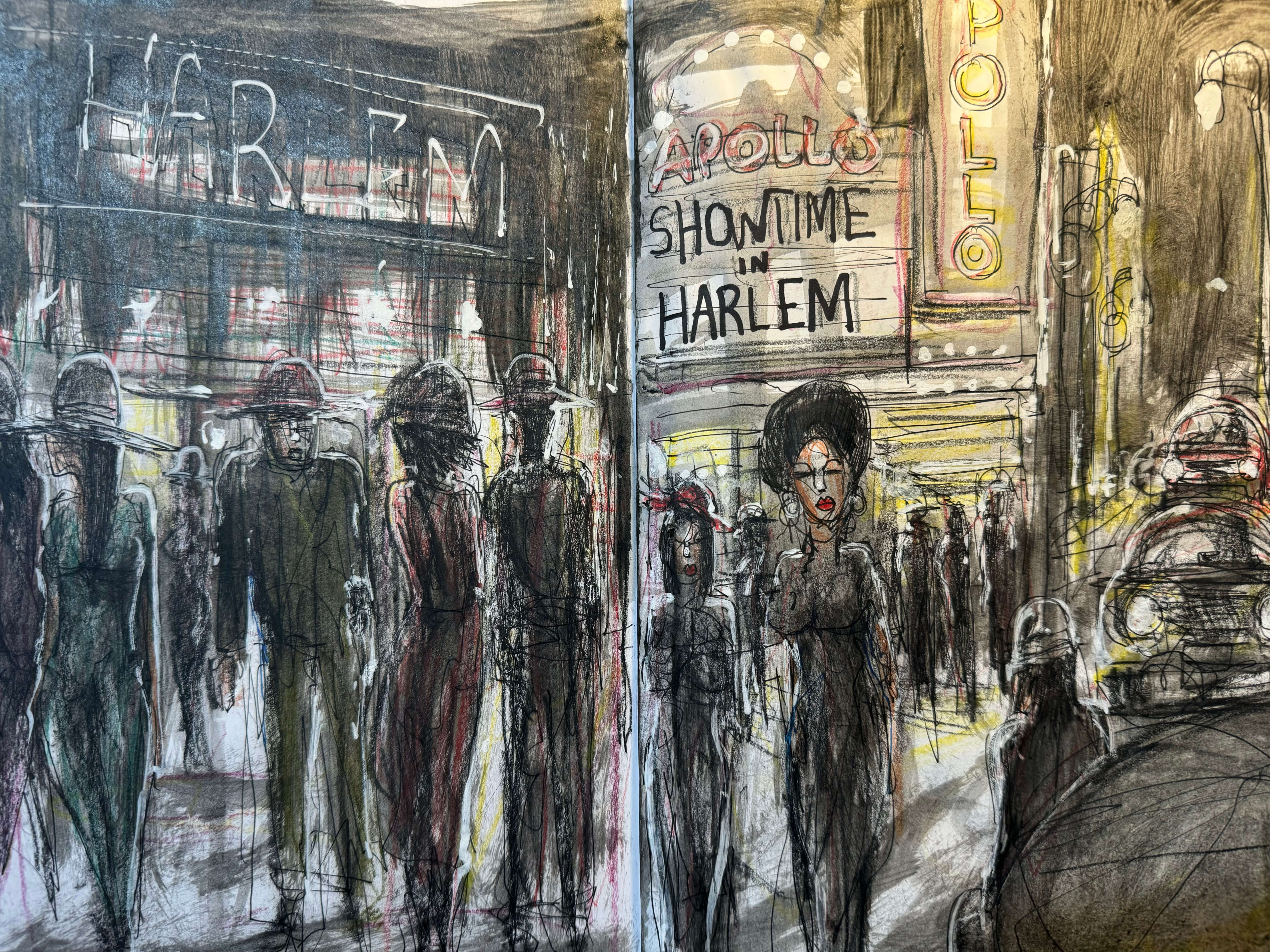
After making history signing with Def Jam, Chuck D says his world became very much about the music. “So for 30 years, from 25 to 55, you know, I would work with the drawing board, give them ideas. You know, we worked hand in hand, but that was the extent of my art. I never sketched on the road. I was writing songs. I was directing art and schooling artists and stuff like that.”
Public Enemy became a worldwide sensation with a monumental discography, featuring 15 studio albums, two live records, four compilations, two remix albums, one soundtrack, four video albums, 39 singles, four promotional singles, 39 music videos and a Rock & Roll Hall of Fame induction — plus major tours and performances that continue to this day.
But when Chuck D’s father died suddenly in 2016, this major life event led the then 55-year-old to put a pencil and paintbrush back into his hands. With his father’s death, Chuck D, who says he was unsure if his father was in a better place, asked himself, “Where’s the spirit?” And that question led the man who never took drugs, even during a lifetime in the music business, to take psychedelics in search of answers.
“I did ayahuasca, and I already was tinkering at art, but it confirmed that this is what you’re going to do with the rest of your life. You’re going to go back into being what you are — a significant illustrator of our time,” he says of the enlightening experience.
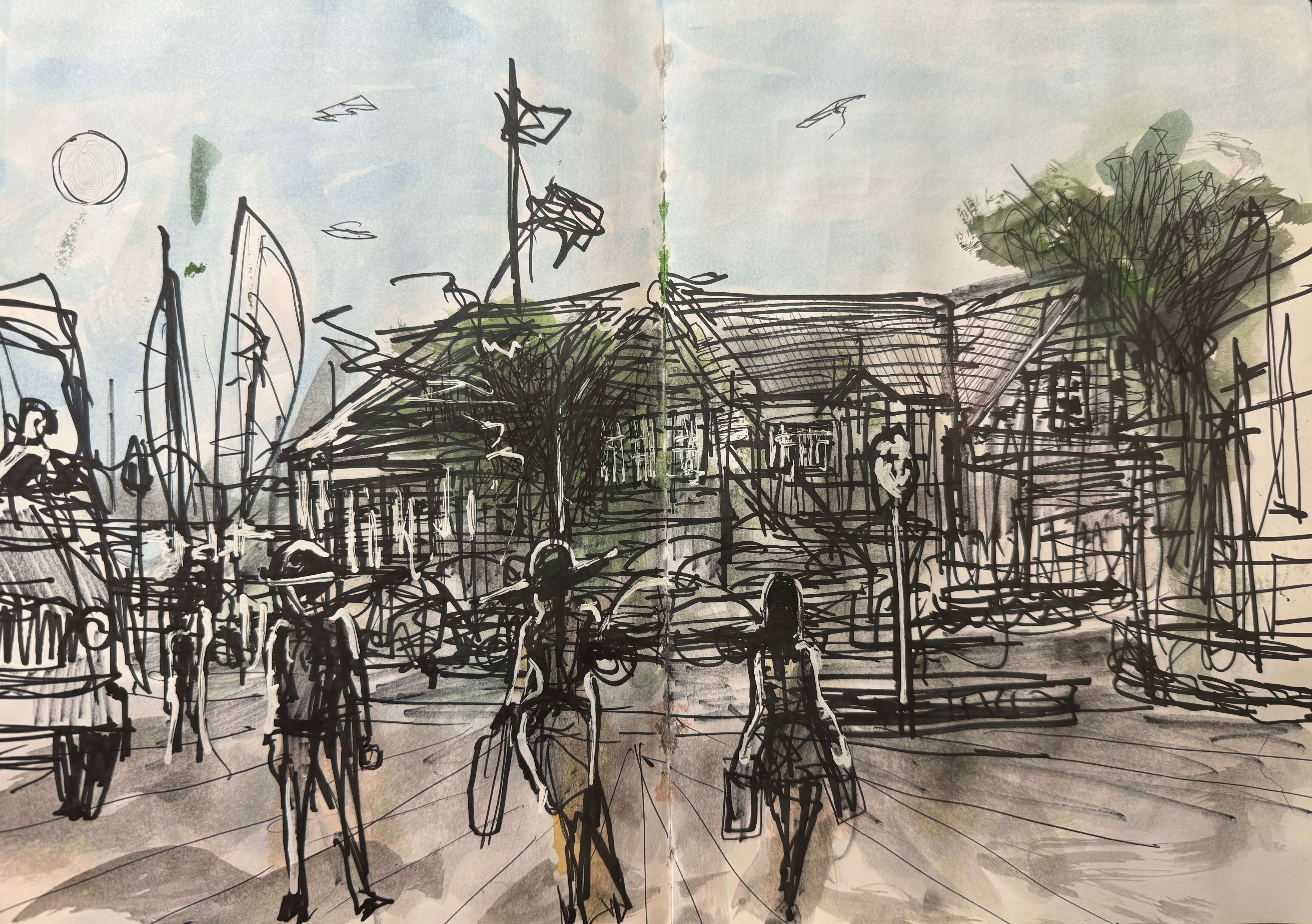
“The crazy thing about it, I was already dabbling in the art and doing this and that, but it reaffirmed me … people start asking about the ayahuasca thing, I said, it’s different for everybody. I know what I went there for and I got my answers in the four-hour journey. I got what I needed.”
Another big moment in 2016, Chuck D joined Prophets of Rage, a super group with members of Rage Against the Machine, Cypress Hill and Public Enemy, and they toured internationally for four intense years. He was drawing throughout.
“We conquered, we saw, we traveled around the world with a super group, we played across 6 million people. .. And I heard and learned from one of my heroes, Ronnie Wood, who I’d seen in a Rolling Stones rehearsal in 2015, that every single hotel room that he went into, he would sketch it out, and I said, ‘Boom, that’s the answer for my downtime.’ Because the thing is, people think when you’re on the road, doing shows and all that, the biggest question — which kind of drives a lot of people to go into the bar 100 times, or going to the club or getting whatever — what do you do with your downtime on a tour? And once I knew that Ronnie Wood did that, I began the path of doing 25,000 illustrations in eight years.”
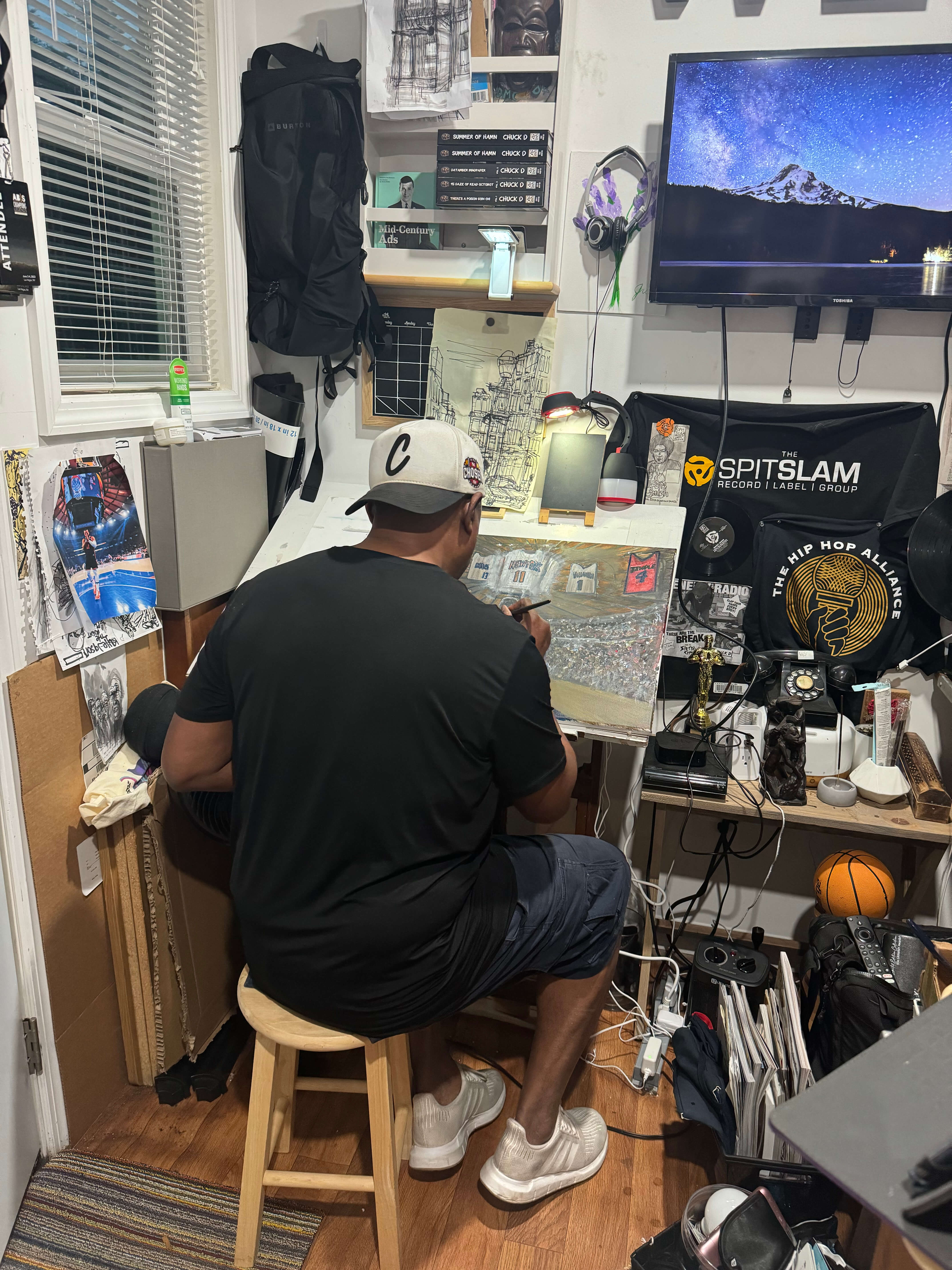
“From 2016 to 2020 it was regaining some of my style I had from 30 years ago, but also in a quicker way. So I trained myself in courtroom speed, like how courtroom artists work, and I said, if I could do that as an illustrator, I could jump online and do something every minute, every day, you know?”
The illustrations, which can be seen in his books and on his @mrchuckd Instagram account, have flooded out of Chuck D these past years, especially, he says, since the pandemic when he became outrageously prolific. Now he’s working through his archive of images and planning for future projects, including a new book about artificial intelligence, Interficial Artelligence: The Moments That Met Me, due out via Enemy Books on February 4, 2025.
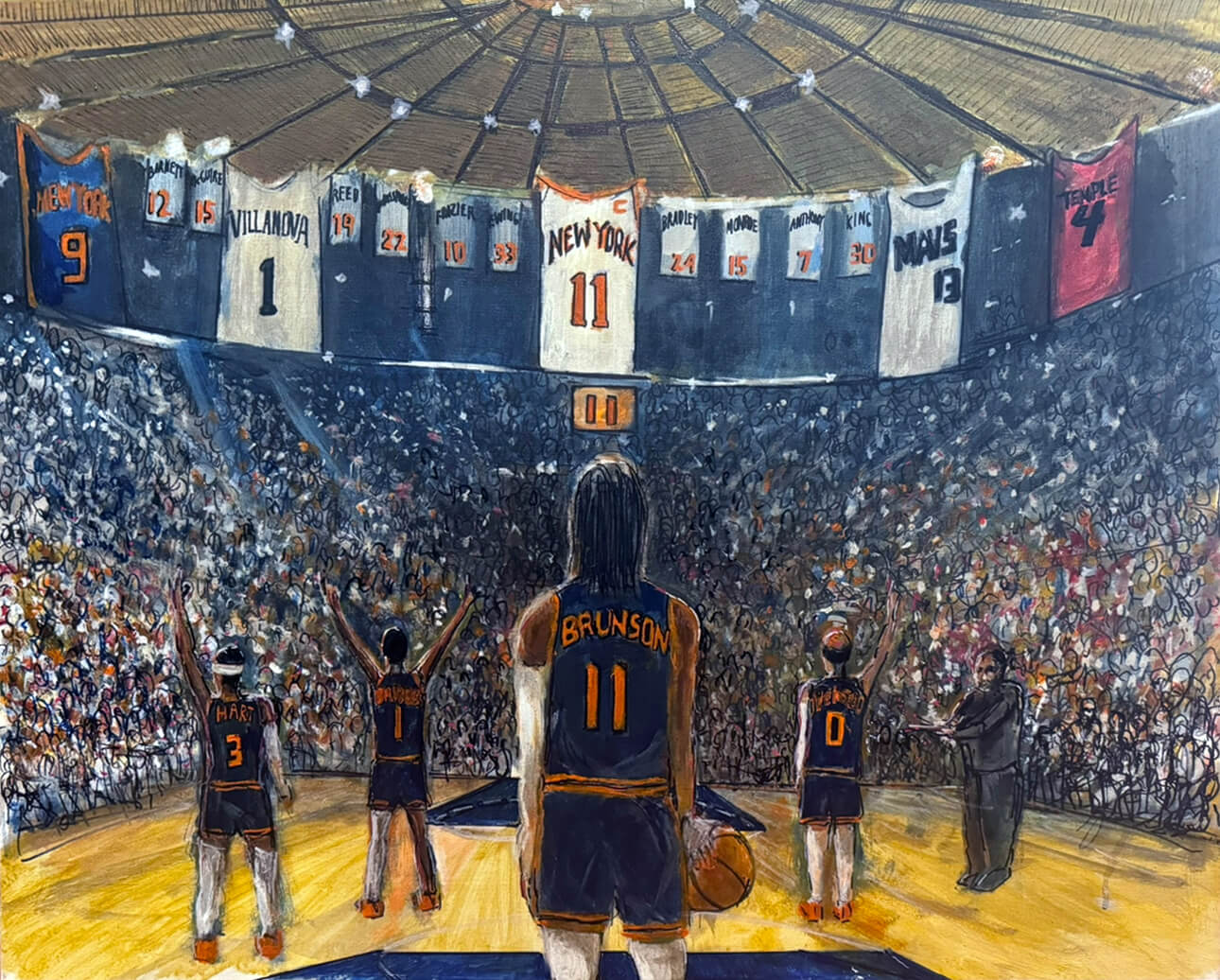
He also recently did two fantastic portraits of Knicks star Jalen Brunson, as requested by the point guard’s parents, Rick and Sandra, for his 28th birthday. “His mom is a fellow Long Islander who also grew up with our music. I simultaneously worked on them from both coasts,” he says, noting he regularly travels between New York and California.
“So a lot of times what I’ve done over the last year, my illustrations have spoken louder than words. And sometimes I might put an illustration up on social media. And they’re like, what do you mean by that? Well, you have to guess, right? Because people today, they listen with their eyes, and if they’re going to listen with their eyes, then my art has to be more than 1,000 words.”
Like everything Chuck D does, his art speaks volumes.
To see more of Chuck D, pick up his books and music or explore his apps, Bring The Noise and RAPstation, available for iOS and Android.



